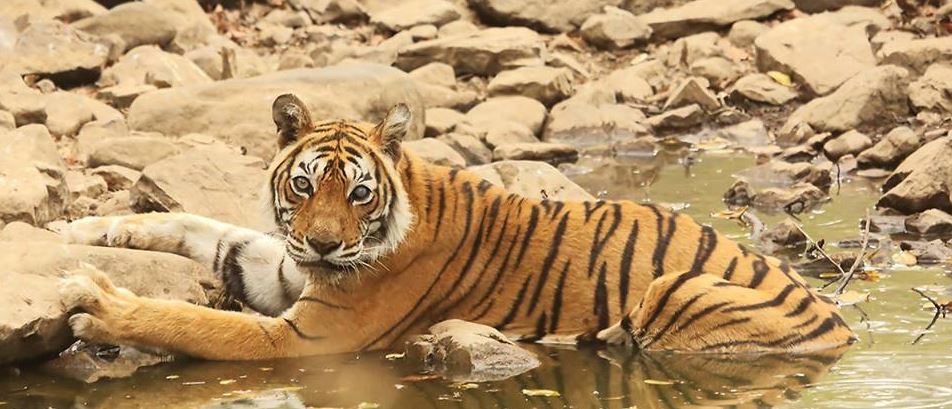Honouring the Tigress Who Brought Ranthambore into the Limelight
A new memorial now stands quietly outside the Jogi Mahal gate of Ranthambhore, just a few metres away from the jungle lakes and ancient ruins that once made up the kingdom of India’s most iconic tigress – Machhli. This tribute, unveiled on International Tiger Day, honours a tiger who wasn’t just famous, but deeply influential in the story of wildlife conservation in Rajasthan. Known for the fish-shaped mark on her face, Machhli wasn’t just another tiger roaming the forests. She was a symbol of strength, beauty, and resilience. Over her 19 years, she became the face of Ranthambhore quite literally, as she was regarded as the most photographed wild tiger in the world. Her life and legacy have inspired countless wildlife photographers, filmmakers, and conservationists from across the globe.
But her importance went far beyond the camera lens.
Back in 2004, the tiger population in Rajasthan was in crisis. According to the NGO Tiger Watch, Ranthambhore had lost nearly 50% of its tigers. Just two years later, only 18 tigers remained in the entire state. Machhli played a key role in turning things around. Over her lifetime, she gave birth to 11 cubs, many of whom grew up to populate not only Ranthambhore but other reserves like Sariska and Ramgarh-Vishdhari. These offspring carried forward her legacy and helped rebuild a dwindling population. Today, Rajasthan is home to 123 tigers, a stunning recovery made possible, in large part, by one tigress.
A Matriarch Remembered
The memorial itself is simple, yet deeply symbolic. A statue of Machhli, garlanded and placed on a bed of rose petals, now welcomes visitors near the park entrance. Rajasthan’s Forest Minister, Sanjay Sharma, inaugurated the memorial, noting it as the first of its kind in Ranthambhore. Only one other tiger memorial exists in the state – for Rajmata in Sariska.
Pramod Dhakar, Deputy Conservator of Forests (Tourism) for the Ranthambhore Tiger Project, mentioned that Machhli’s cubs could be found across various parts of Rajasthan, including Ranthambhore, Sariska, and Ramgarh-Vishdhari. He shared that the memorial was created as a tribute to honour her memory.
Machhli ruled the core of the park – particularly the famous lake region consisting of Rajbagh Talao, Malik Talao, and Padam Talao. This territory, rich in prey and water, became the perfect setting for her growing family. Over time, her daughters and granddaughters continued to reign over these parts, earning Ranthambhore the nickname “land of tiger queens.”
Her fame wasn’t limited to Rajasthan or even India. International documentaries and wildlife series often featured Machhli. One of her most memorable moments – a fierce battle with a 14-foot crocodile – was caught on film and amazed viewers around the world. Her fearlessness, especially as she aged and grew weaker, only added to her legendary status. Even the BBC, in her obituary, called her one of the biggest draws for tourists visiting Ranthambore National Park.
Noted wildlife expert and filmmaker Valmik Thapar was especially moved by Machhli. In his book Living with Tigers, he called her “the most beautiful of all tigers.” He described his final sighting of her in June 2016, just before she passed away. Despite being old, blind in one eye, and nearly toothless, she had just made a kill. “She could still cut through flesh with worn-out stubs of teeth,” he wrote, still in awe of her strength.
